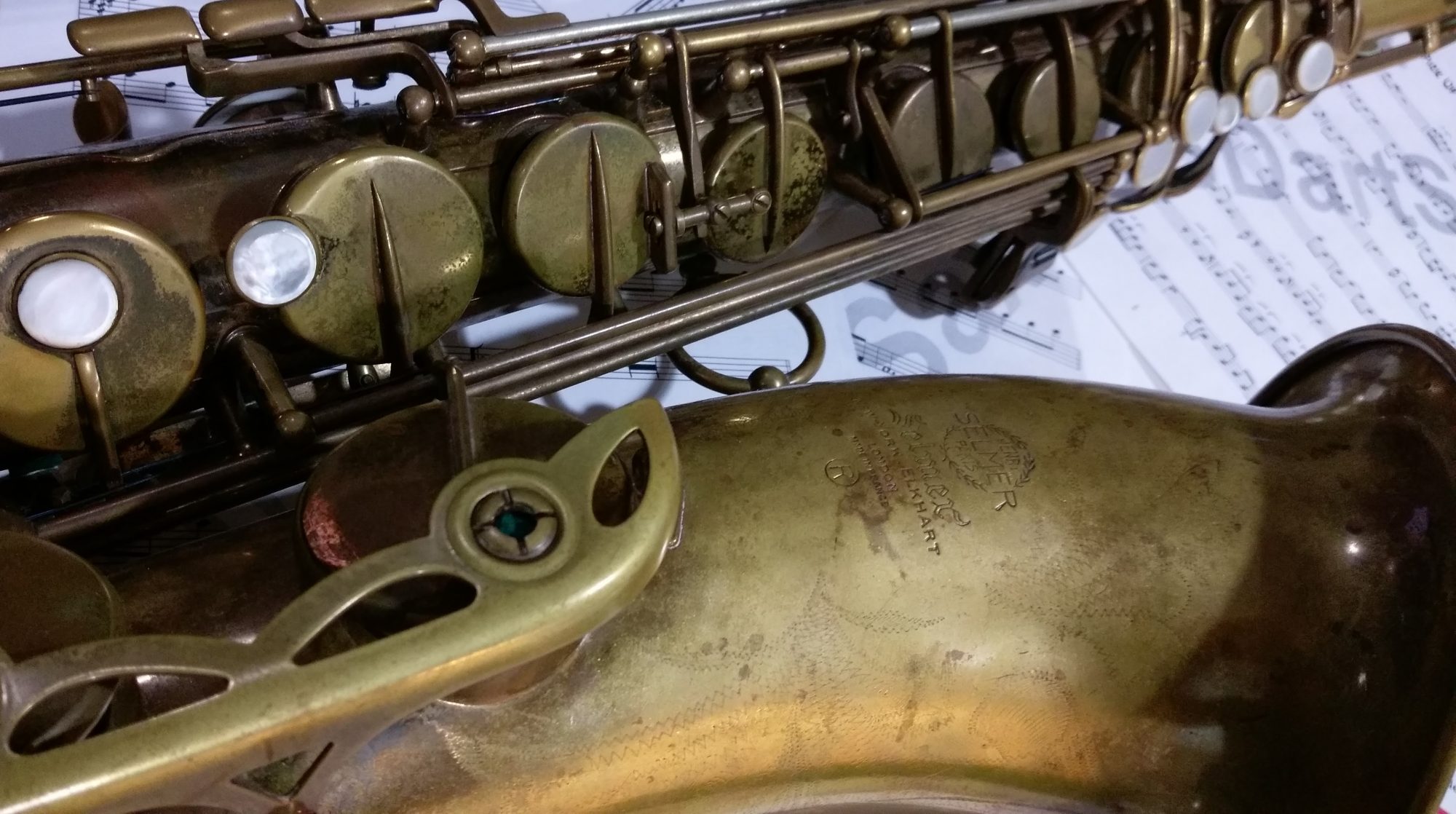Yesterday I got a new Alto mouthpiece in the mail! I’ve been playing RPC mouthpieces on Tenor and Bari for a few years now, but for some reason I never made the switch on Alto.
I’ve grown increasingly unhappy with my current Alto mouthpiece – a Lakey 7*3, which I’ve been playing for about five years. It’s got a nice edge to it, and it projects well, but the sound is a bit shrill and thin for my taste. It’s also difficult to control. The pitch is squirrelly and I find it hard to control. it doesn’t squeak, but notes will randomly ‘crack’, playing a different partial/overtone than what’s intended. I’ve never had that problem with any of my previous mouthpieces.
Anyway, I got a ’90B’ mouthpiece from Ron Cohelo. Ron is a great guy. He hand-makes each mouthpiece to order. With each mouthpiece, he has taken the time to talk to me at length about my approach and concept for that horn, what I’m going for, what I’ve tried, reed preferences, the works. He works alone, so the process can take awhile, but it’s worth it.
The new mouthpiece will take some getting used to, but my initial impressions are very positive. It still projects well, and can get a nice bright sound without sounding shrill and thin. But overall it sounds warmer. It’s also much more stable and centered. The pitch has been excellent, and I haven’t had any control problems.
That said, I’ll have to work with it for a while to get comfortable again. I’ve got to find my altissimo notes on this new mouthpiece. I’ve also got to experiment with some reeds. I had been playing 2.5 ‘green box’ Vandoren Java reeds with the Lakey, but these feel too soft now. Ron sent a few different strength Rico Jazz Select reeds to try, and they all worked well. But so far my preference with the new mouthpiece has been for 2.5 ‘red box’ Java reeds.
I’ve also noticed that my Francois Louis ‘pure brass’ ligature doesn’t work well with the shape of the Alto RPC (which is odd because it works fine on Tenor). I can’t seem to tighten it enough to keep it from slipping. Luckily, Ron provides a simple (he calls it ‘cheap’) ligature with the mouthpiece. But it works surprisingly well! Maybe ligatures are over-rated…they just need to keep the reed in place after all.
BTW, I don’t get any endorsements for mouthpieces or reeds from any of the manufacturers I mention here or on my gear page. These are just my honest opinions 🙂
@SDartSax
